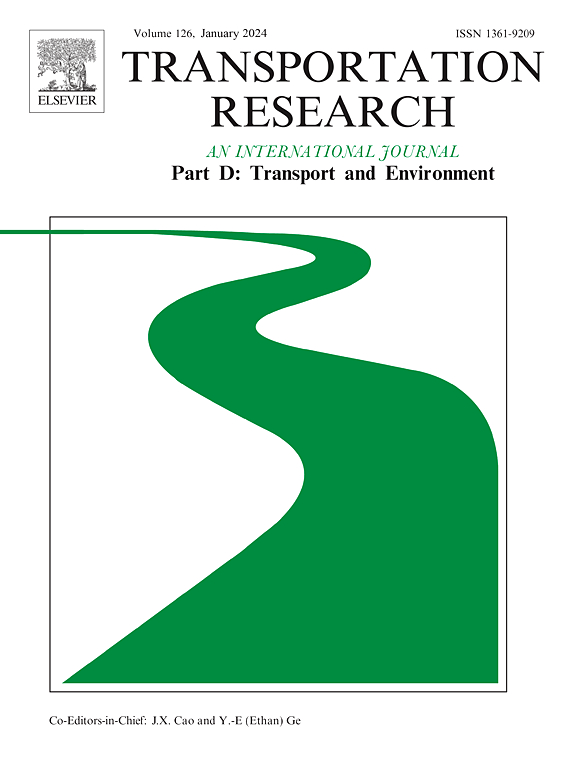揭示极端天气下城际交通的多阶段弹性模式
IF 7.7
1区 工程技术
Q1 ENVIRONMENTAL STUDIES
Transportation Research Part D-transport and Environment
Pub Date : 2025-10-17
DOI:10.1016/j.trd.2025.105057
引用次数: 0
摘要
极端天气事件对区域恢复能力和交通网络稳定性构成越来越大的威胁。为刻画极端天气下城市间流动性的时空过程和驱动机制,以台风“贝碧嘉”为研究对象,确定了考虑灾前和灾后波动的多相“水滴”型恢复力曲线。基于时间和空间异质性识别,应用机器学习回归来确定特定阶段的移动驱动因素。结果表明:①在研究期间,人口流动强度主要呈M型波动,依次为预防性疏散高峰、冲击诱发性下降和灾后恢复;2)网络冗余表现出与中心性相反的趋势,碎片化后模块聚类重组;③不同阶段的流动性变化主要受信息意识、灾害强度和流动性需求的驱动。综合分析促进了我们对交通响应周期的理解,为提高系统可持续性的区域气候适应性交通战略提供了可行的见解。本文章由计算机程序翻译,如有差异,请以英文原文为准。
Revealing multi-phase resilience patterns of inter-city mobility under extreme weather
Extreme weather events pose growing threats to regional resilience and transportation network stability. To characterize spatiotemporal process and driving mechanisms of inter-city mobility under extreme weather, we investigate the Yangtze River Delta urban agglomeration during Typhoon Bebinca and identify a novel multi-phase “water-drop” resilience curve considering pre- and post- disaster fluctuations. Based on temporal and spatial heterogeneity identification, machine-learning regression is applied to determine stage-specific mobility drivers. Results reveal that: 1) mobility intensity mainly fluctuated in an M−shaped pattern throughout the research period with preventive evacuation peaks, impact-induced decline, and post-disaster recovery; 2) network redundancy exhibited opposite trends to centrality, with modular clustering reorganized after fragmentation; and 3) mobility changes were primarily driven by information awareness, disaster intensity, and mobility needs across different stages. The comprehensive analysis advances our understanding of the mobility response cycle, providing actionable insights for regional climate-resilient transportation strategies enhancing system sustainability.
求助全文
通过发布文献求助,成功后即可免费获取论文全文。
去求助
来源期刊
CiteScore
14.40
自引率
9.20%
发文量
314
审稿时长
39 days
期刊介绍:
Transportation Research Part D: Transport and Environment focuses on original research exploring the environmental impacts of transportation, policy responses to these impacts, and their implications for transportation system design, planning, and management. The journal comprehensively covers the interaction between transportation and the environment, ranging from local effects on specific geographical areas to global implications such as natural resource depletion and atmospheric pollution.
We welcome research papers across all transportation modes, including maritime, air, and land transportation, assessing their environmental impacts broadly. Papers addressing both mobile aspects and transportation infrastructure are considered. The journal prioritizes empirical findings and policy responses of regulatory, planning, technical, or fiscal nature. Articles are policy-driven, accessible, and applicable to readers from diverse disciplines, emphasizing relevance and practicality. We encourage interdisciplinary submissions and welcome contributions from economically developing and advanced countries alike, reflecting our international orientation.

 求助内容:
求助内容: 应助结果提醒方式:
应助结果提醒方式:


